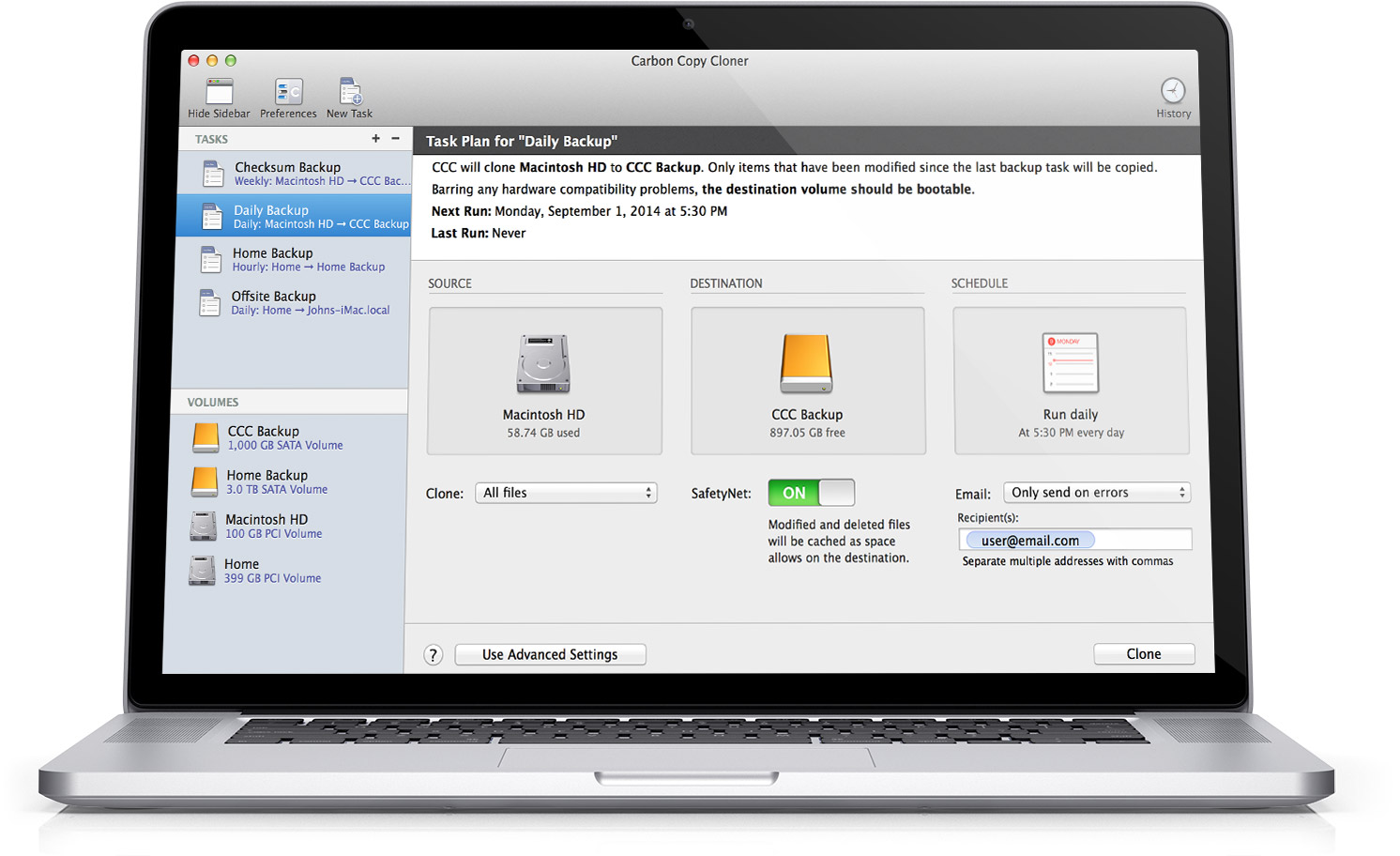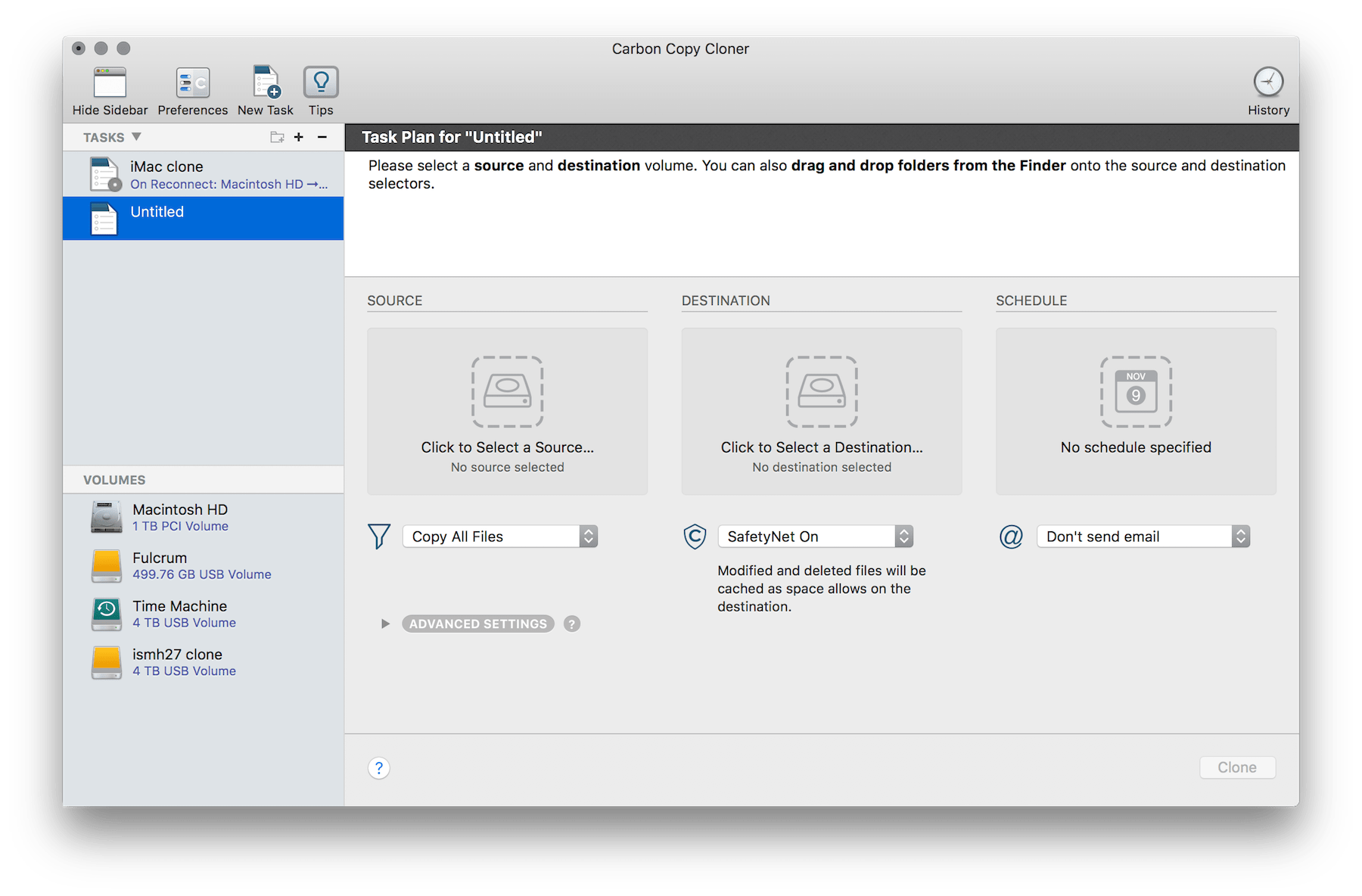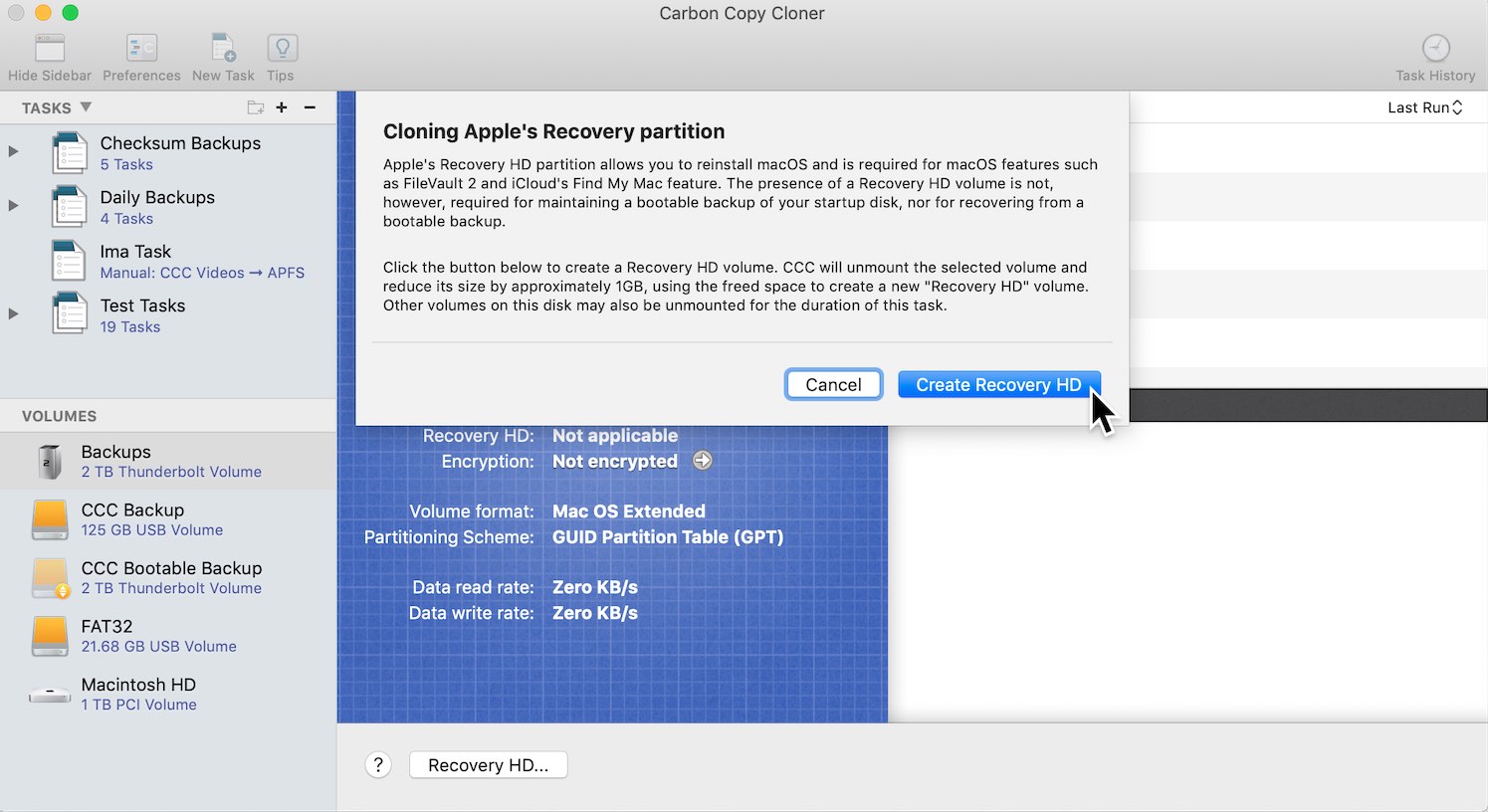
Copies of the Signed System Volume are not bootable without a cryptographic seal applied by Apple. One example of this is the introduction of the Signed System Volume in Big Sur. One of the consequences of those changes is that is harder for third-party applications that need deep access to the system to work. However, over the last few versions of macOS Apple has been making changes to make it more secure. Some apps are focused on creating clones of your hard drive and offer incremental backup as an extra feature. Apple’s own Time Machine, which is included with macOS, is an example of this kind of solution.

Carbon copy cloner 4.1 mac#
before removing.Many options are focused solely on making backing up your Mac regularly as easy as as possible. Unmount of all volumes on disk3 was successfulĪlways diskutil unmountDisk /dev/disk.

Unmount of all volumes on disk2 was successful before removing $ diskutil unmountDisk /dev/disk2 ⇐ unmount both drives If you can attach both drives, copy directly from one to the other.Īttach one at a time, and use diskutil list to identify each device name. $ diskutil list /dev/disk2 (external, physical): The dd command is almost the same, but if and of are reversed. Or, if you can concurrently attach both disks, copy directly: sudo dd if=/dev/disk2 of=/dev/disk3 bs=64k You also need enough local disk space for the image. This will take a long time, and there is no progress bar. Unmount of all volumes on disk2 was successful $ diskutil unmountDisk /dev/disk2 ⇐ unmount the source disk $ diskutil list ⇐ list attached disks and partitions /dev/disk2 (external, physical):Ġ: FDisk_partition_scheme *120.0 GB disk2 Open Terminal, identify the disk and unmount it: If the following warning appears, click Ignore: You can use this procedure with any drive: eg, to clone an MGC Compact Flash from one with a known password. You can check progress while the command is running, by pressing Ctrl-T.Specifying a larger block size (bs=1m) doesn't seem to make much difference, though YMMV!.Using /dev/rdisk# (raw disk) in place of /dev/disk# is much faster.Be VERY careful with if (input file) and of (output file).If you can attach both disks, copy directly: sudo dd if=/dev/disk2 of=/dev/disk3 bs=64k.

Make sure the destination has enough space, eg, is equal to (or greater than) the source size.

If the copy fails due to disk errors, try using the following command at step 3:ĭd if=/dev/disk2 of=/Users/mike/diskimage.img conv=noerror,syncĭd will take much longer using this option, errors are written as NUL bytes. The second dd command is almost the same, but if and of are reversed. Sudo dd of=/dev/disk2 if=/Users/mike/diskimage.img Attach and identify the destination disk ⇒Ħ. Sudo dd if=/dev/disk2 of=/Users/mike/diskimage.imgĤ. If the installation has primary and backup signalling servers, clone one at a time to avoid service interruption. Make a working copy of a Signalling Server hard disk This option can often recover a dead hard drive, or an unreadable file, but it does not repair the error. If the operation stops with an I/O error, try to salvage all readable data with conv=noerror,sync By adding sync, errors are padded with zero's (optional) bs=n sets both input and output block size (optional, default=512 byte blocks).


 0 kommentar(er)
0 kommentar(er)
